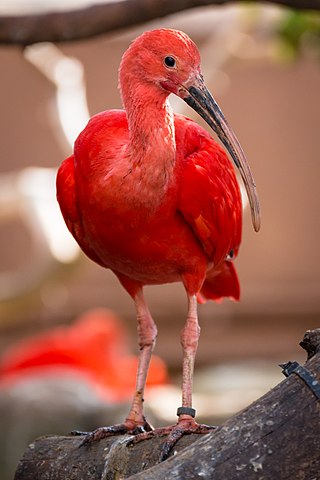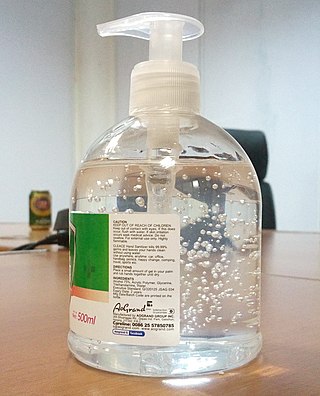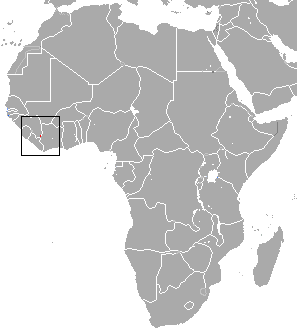Stridulation is the act of producing sound by rubbing together certain body parts. This behavior is mostly associated with insects, but other animals are known to do this as well, such as a number of species of fish, snakes and spiders. The mechanism is typically that of one structure with a well-defined lip, ridge, or nodules being moved across a finely-ridged surface or vice versa, and vibrating as it does so, like the dragging of a phonograph needle across a vinyl record. Sometimes it is the structure bearing the file which resonates to produce the sound, but in other cases it is the structure bearing the scraper, with both variants possible in related groups. Common onomatopoeic words for the sounds produced by stridulation include chirp and chirrup.

The Arabian Desert is a vast desert wilderness in West Asia that occupies almost the entire Arabian Peninsula with an area of 2,330,000 square kilometers (900,000 sq mi). It stretches from Yemen to the Persian Gulf and Oman to Jordan and Iraq. It is the fourth largest desert in the world and the largest in Asia. At its center is Ar-Rub' al-Khali, one of the largest continuous bodies of sand in the world. It is an extension of the Sahara Desert.

The scarlet ibis, sometimes called red ibis, is a species of ibis in the bird family Threskiornithidae. It inhabits tropical South America and part of the Caribbean. In form, it resembles most of the other twenty-seven extant species of ibis, but its remarkably brilliant scarlet coloration makes it unmistakable. It is one of the two national birds of Trinidad and Tobago, and its Tupi–Guarani name, guará, is part of the name of several municipalities along the coast of Brazil.

The red-breasted sapsucker is a medium-sized woodpecker of the forests of the west coast of North America.

The phylum Bacteroidota is composed of three large classes of Gram-negative, nonsporeforming, anaerobic or aerobic, and rod-shaped bacteria that are widely distributed in the environment, including in soil, sediments, and sea water, as well as in the guts and on the skin of animals.

Ipomoea is the largest genus in the plant family Convolvulaceae, with over 600 species. It is a large and diverse group, with common names including morning glory, water convolvulus or water spinach, sweet potato, bindweed, moonflower, etc. The genus occurs throughout the tropical and subtropical regions of the world, and comprises annual and perennial herbaceous plants, lianas, shrubs, and small trees; most of the species are twining climbing plants.

Valeriana rubra, the red valerian, spur valerian, kiss-me-quick, fox's brush, devil's beard or Jupiter's beard, is a popular garden plant grown for its ornamental flowers.

The American flamingo is a large species of flamingo native to the West Indies, northern South America and the Yucatán Peninsula. It is closely related to the greater flamingo and Chilean flamingo, and was formerly considered conspecific with the greater flamingo, but that treatment is now widely viewed as incorrect due to a lack of evidence. It is also known as the Caribbean flamingo, although it is also present in the Galápagos Islands. It is the only flamingo that naturally inhabits North America along with the Neotropical realm.

Hand sanitizer is a liquid, gel, or foam used to kill viruses, bacteria, and other microorganisms on the hands. It can also come in the form of a cream, spray, or wipe. While hand washing with soap and water is generally preferred, hand sanitizer is a convenient alternative in settings where soap and water are unavailable. However, it is less effective against certain pathogens like norovirus and Clostridium difficile and cannot physically remove harmful chemicals. Improper use, such as wiping off sanitizer before it dries, can also reduce its effectiveness, and some sanitizers with low alcohol concentrations are less effective. Additionally, frequent use of hand sanitizer may disrupt the skin's microbiome and cause dermatitis.

Crotalus ruber is a venomous pit viper species found in southwestern California in the United States and Baja California in Mexico. Three subspecies are currently recognized, including the nominate subspecies described here.

The red myotis is a vesper bat species found in Argentina, Brazil, Paraguay and Uruguay.

The reddish hermit is a species of bird in the family Trochilidae, the hummingbirds. It is found in Bolivia, Brazil, Colombia, Ecuador, Peru, Venezuela, and the Guianas.

Scinax ruber is a species of frog in the family Hylidae which is known in English as the red snouted treefrog or red-snouted treefrog, sometimes also Allen's snouted treefrog, the latter referring to the now-synonymized Scinax alleni. This widespread species is found in much of Amazonian and northern coastal South America and into Panama, as well as in some Caribbean islands as introduced populations. It is a complex containing several cryptic species.

The red salamander is a species of salamander in the family (Plethodontidae) endemic to the eastern United States. Its skin is orange/red with random black spots. Its habitats are temperate forests, small creeks, ponds, forests, temperate shrubland, rivers, intermittent rivers, freshwater, trees springs. Overall this species is common and widespread, but locally it has declined because of habitat loss and it is considered threatened in Indiana and New York. Red salamanders eat insects, earthworms, spiders, small crustaceans, snails, and smaller salamanders. To eat, they extend their tongue to capture prey on the tip of it and retract it back into their mouths. The red salamander, as a member of the family Plethodontidae lacks lungs and respires through its skin.

Noack's roundleaf bat is a species of bat in the family Hipposideridae. It is found throughout tropical Africa. Its natural habitats are subtropical or tropical moist lowland forests, moist savanna, and caves and other subterranean habitats.

Lamotte's roundleaf bat is a species of bat found only at Mount Nimba on the border of Côte d'Ivoire, Guinea and Liberia. It is critically endangered.

Clathrus ruber is a species of fungus in the family Phallaceae, and the type species of the genus Clathrus. It is commonly known as the latticed stinkhorn, the basket stinkhorn, or the red cage, alluding to the striking fruit bodies that are shaped somewhat like a round or oval hollow sphere with interlaced or latticed branches. The species was illustrated in the scientific literature during the 16th century, but was not officially described until 1729.

Euxoa detersa, the rubbed dart, sandhill cutworm or sand cutworm, is a moth of the family Noctuidae. The species was first described by Francis Walker in 1856. It is found in North America from Newfoundland to North Carolina, west to Nebraska, north to Alberta and the Northwest Territories.

Eriophyes is a genus of mite that forms galls, specially on trees of the family Rosaceae. Some are called blister mites. The blue butterfly Celastrina serotina has been reported to feed on these galls and also on the mites, making it one of the uncommon carnivorous Lepidoptera.

Otolithes ruber, commonly known as the tigertooth croaker, silver teraglin, wiretooth, snapper kob, snapper salmon, Yankee whiting or Yankee salmon is a species of marine ray-finned fish belonging to the family Sciaenidae, the drums and croakers. This species is found in the Indo-Pacific region.


















